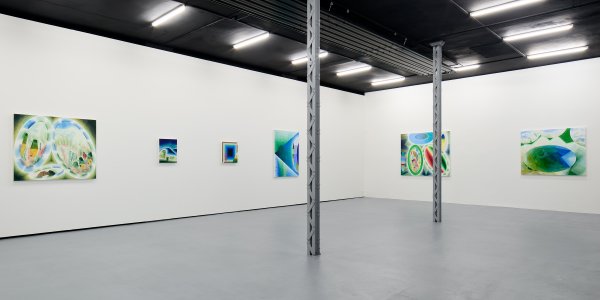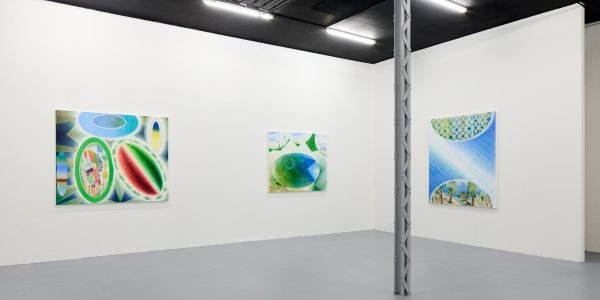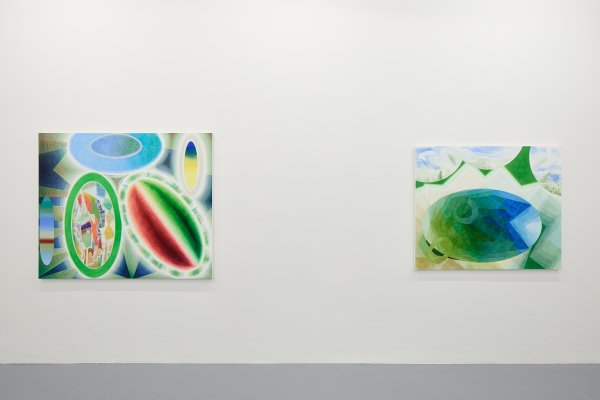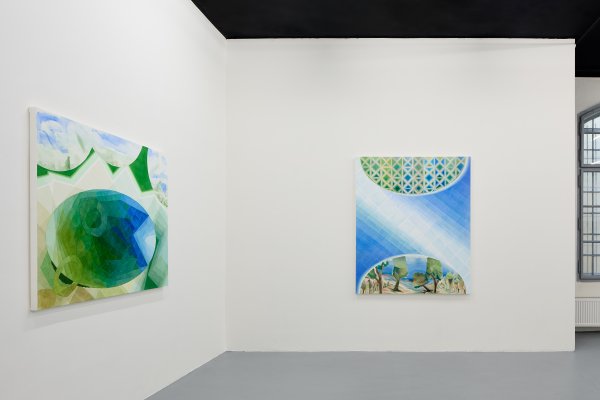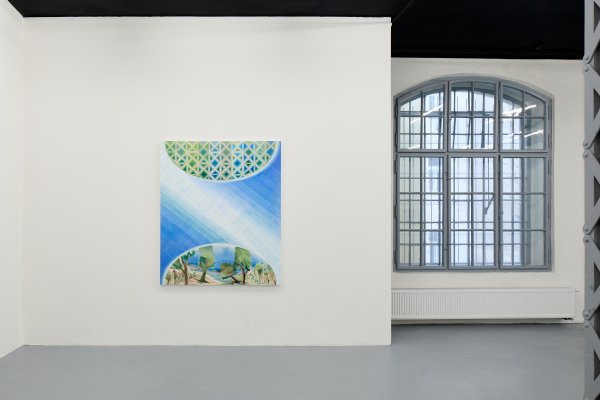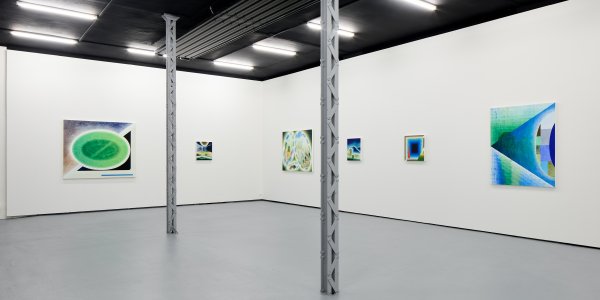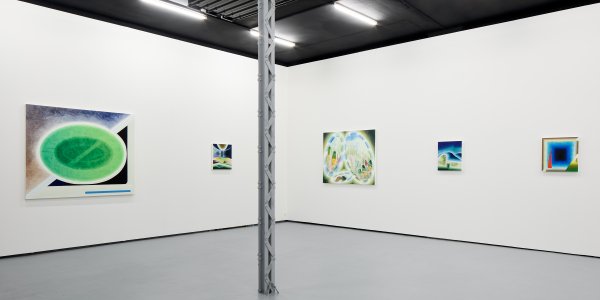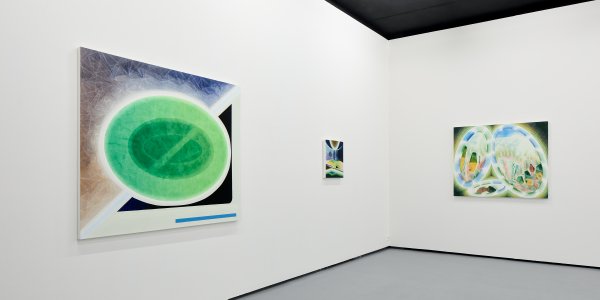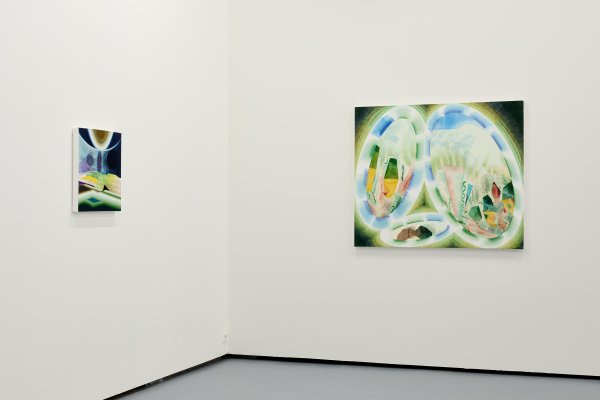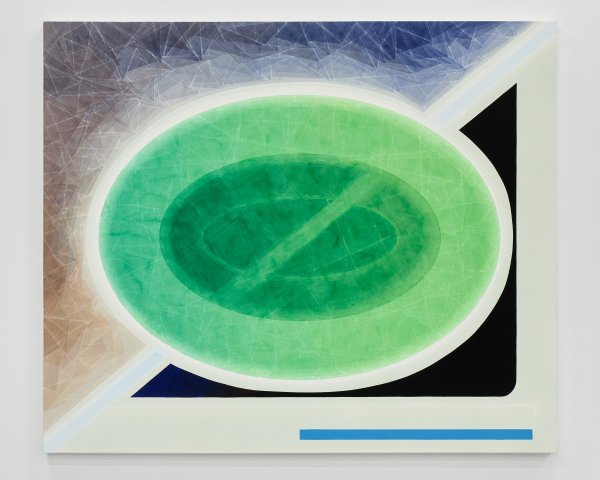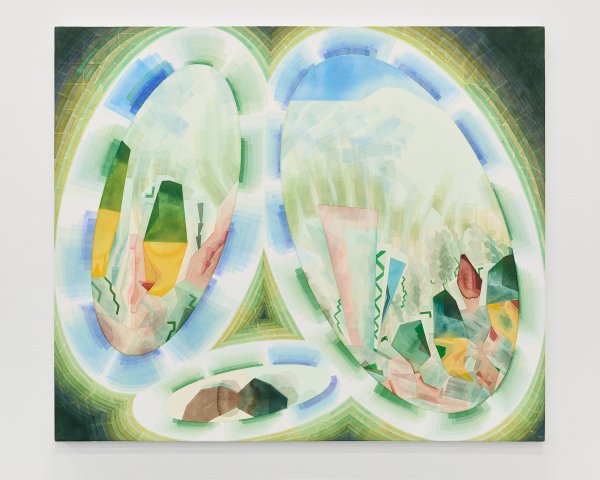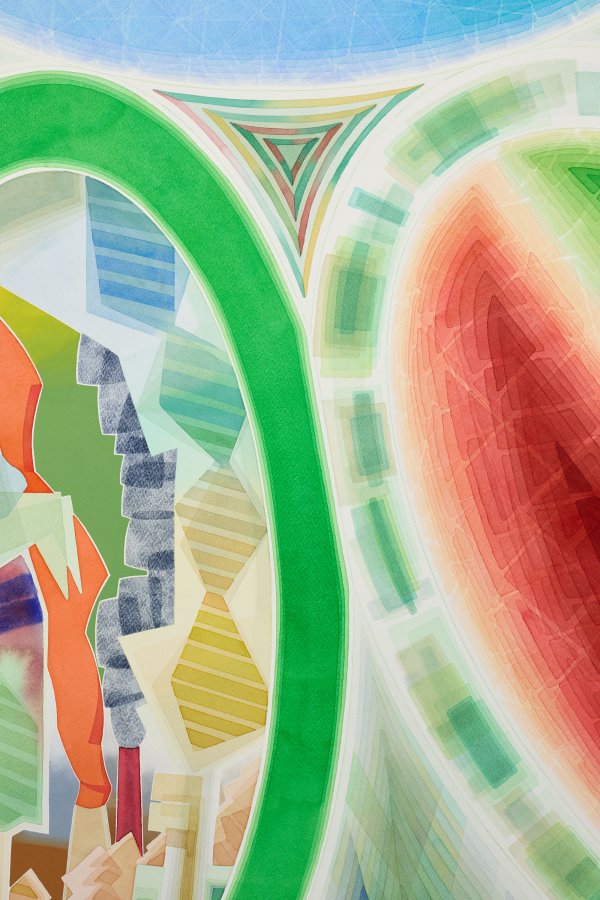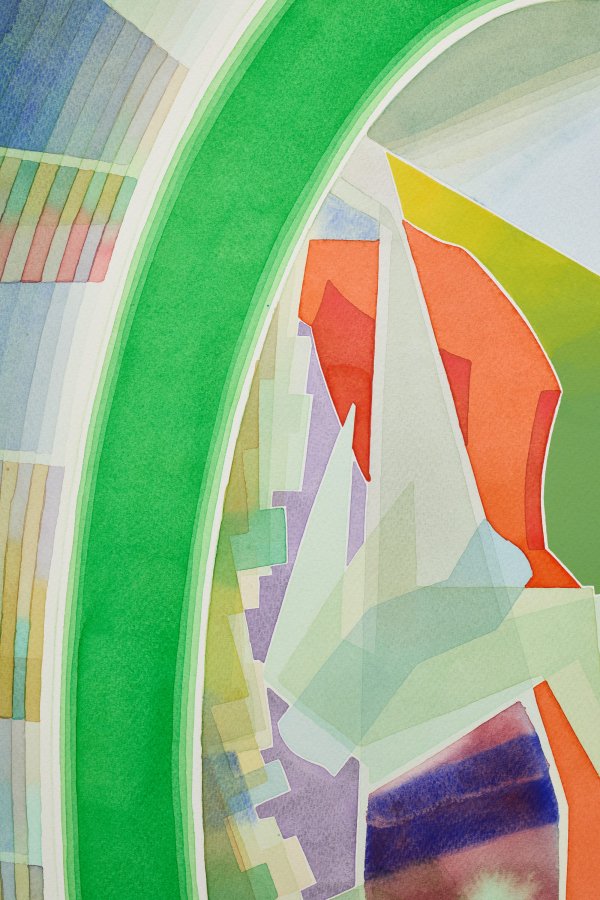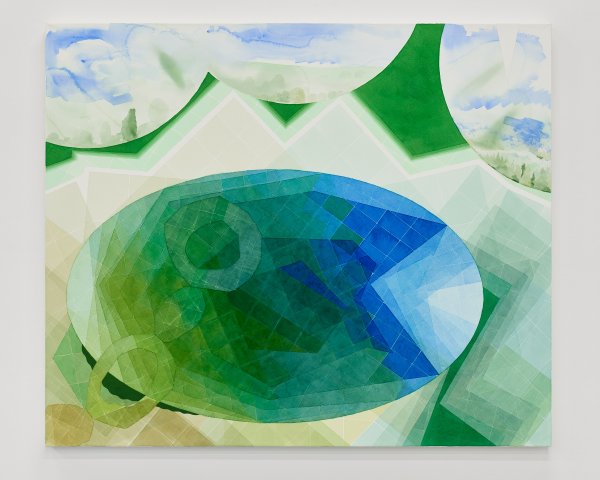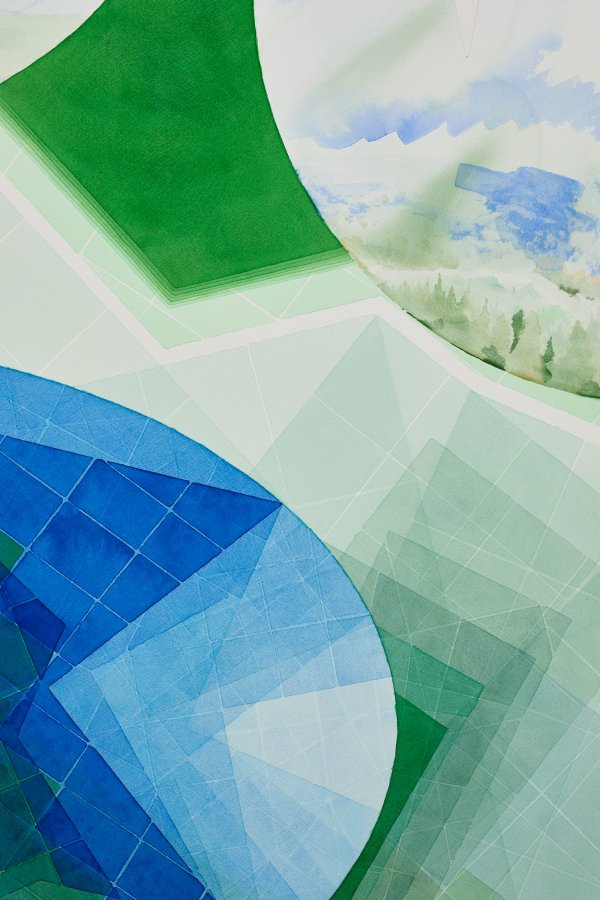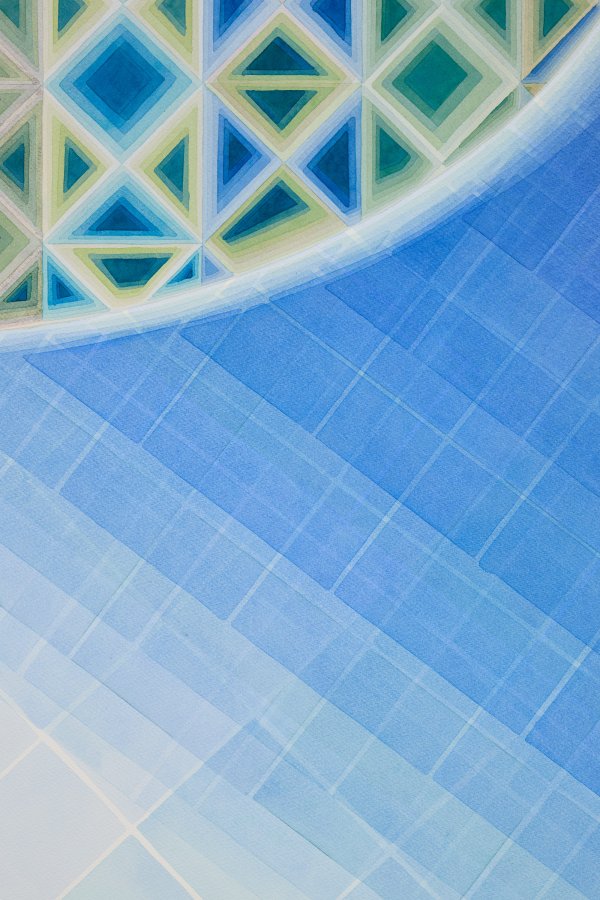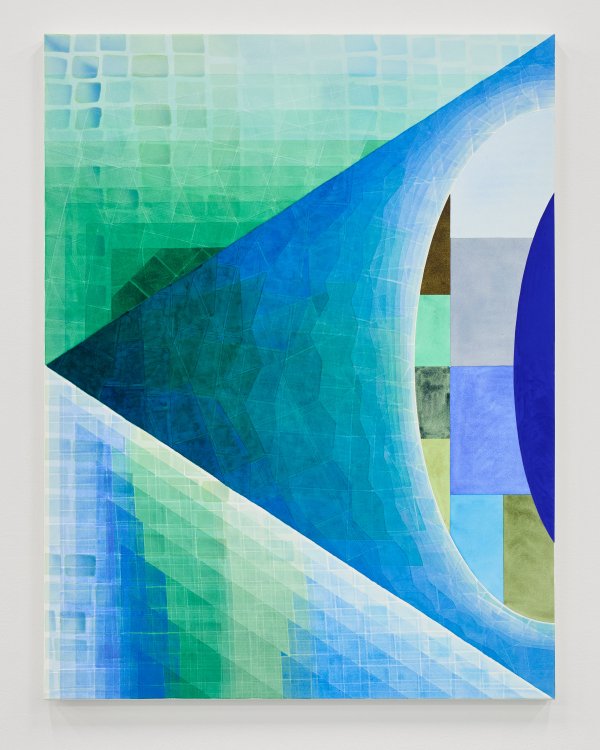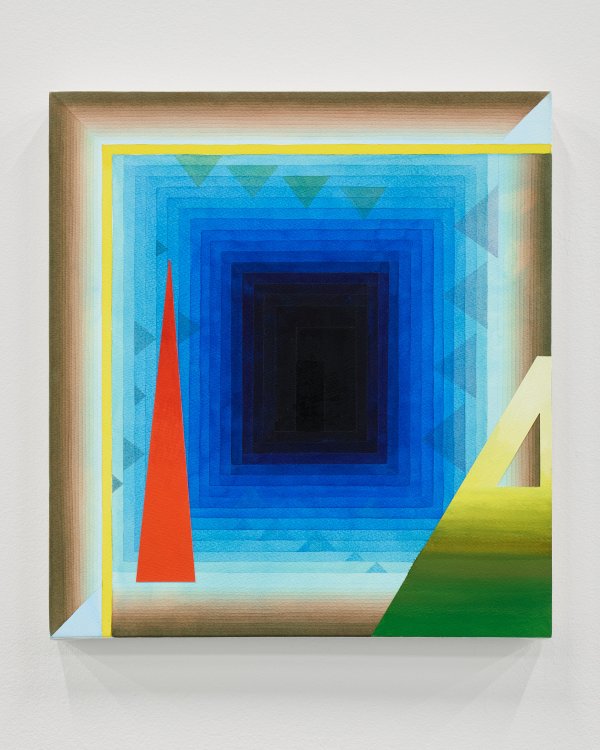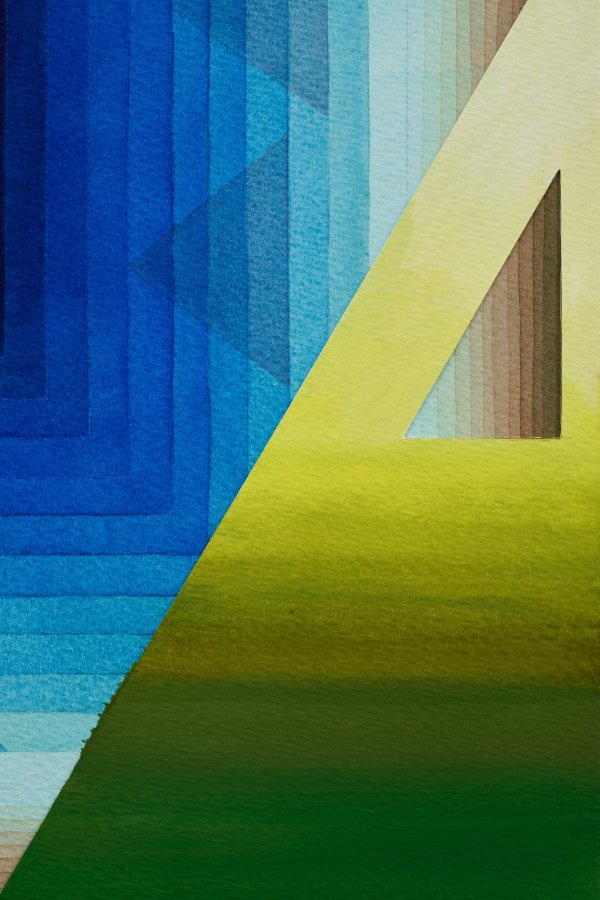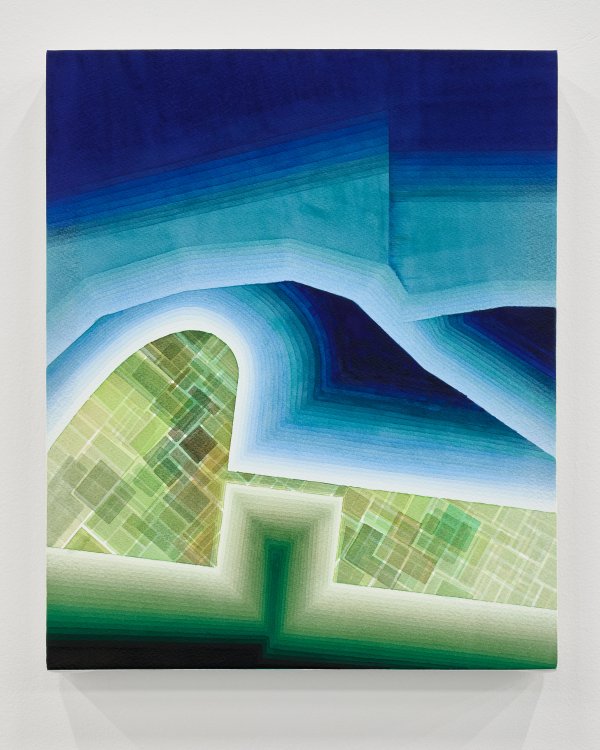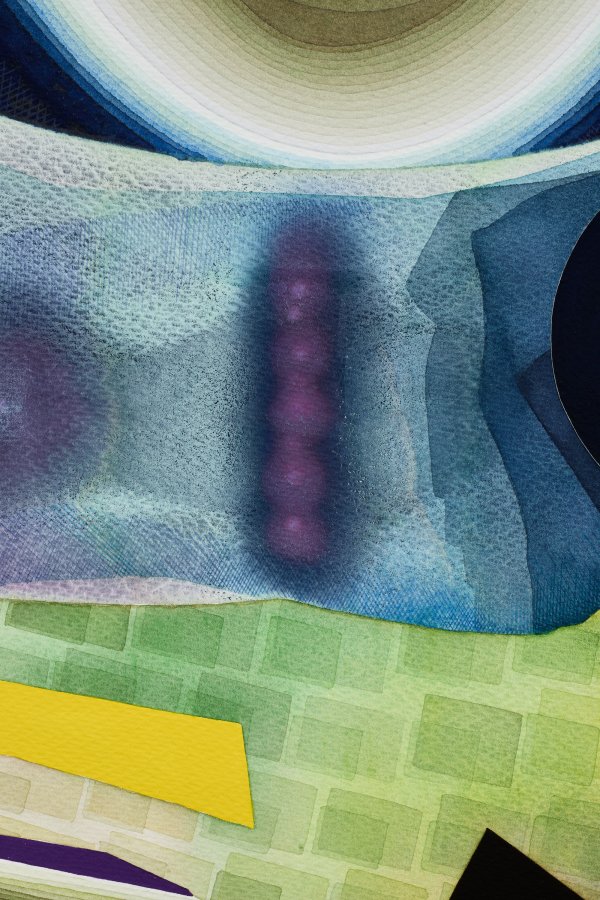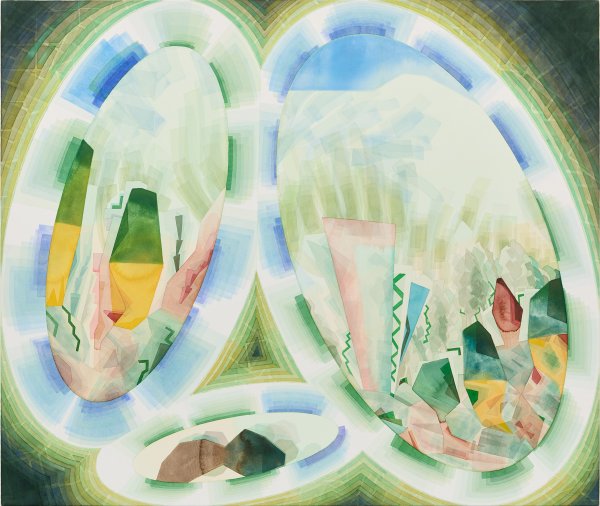Lukáš Karbus
Arrow of Growth (The Gardener's Year)
6.12.2023–10.2.2024 Prague Curated by Jiří Ptáček- text by Jiří Ptáček (EN)
- text by Jiří Ptáček (CZ)
Arrow of Growth (The Gardener’s Year)
When Lukáš Karbus first exhibited his large format watercolour landscapes and flower-themed still lifes at Polansky Gallery nine years ago, no one expected that before long he would turn away from naturalism to the language of abstract painting. In his current paintings, realistic objects seem to be simply an inadvertent biproduct “formed” from mutually neighbouring elements of colour. They appear exclusively as compositional details or as mere hints of landscape horizons. The visual field has been taken over entirely by geometrical elements and networks, their interrelations and superimpositions, the emergence of space and light from colour surfaces, and the like.
As for Karbus himself, he is still the same person who decided to live in the countryside after graduating from art school, so that he could be closer to forests and fields where besides all else, time “passes more slowly”. And this despite the fact that this this slowness evidently only provides an opportunity to mentally configure oneself to living with time and strengthen one’s focus on its manifestations. The paintings in the exhibition “Arrow of Growth (The Gardner’s Year)” reflect the rhythm of nature, life in the countryside as well as the ritualized act of artistic work that collectively channel Karbus’s everyday life. For that matter, when he reflects on what new perspectives may have influenced the form of his work, he mentions the garden in front of his house where he looks after ornamental and agricultural plants, devising the most appropriate methods for their cultivation, as well as observing their growth with no lesser interest.
It is already well known that Karbus also draws inspiration for his work from pre-modern art, modernism, the avantgarde, as well as from contemporary art. However, the key to accessing Karbus’s most recent watercolours lies in embracing the condition that rather than seeking out cultural references, we give space to their sensorial qualities. We then find ourselves closer to Karbus’s approach to his artistic practice based on absorbing all the influences that have so far been mentioned in this context and their transference to paintings, testifying not only to the intensity of experiencing reality, but also to the process of painting as such. For a fine artist, this is an inherent part of life and Karbus extends it methodically to the maximum possible extent through his laborious and time-consuming technique of layering watercolours, stratifying surfaces that not only narrate about the flow of time, but in fact include within them a practical expression of time itself. Thus, although his paintings may give the impression of being exclusively abstract, graspable only with specific scholarship and experience, at their core they constitute highly informal testimonies about the most ordinary reality that we perceive and feel.
Lukáš Karbus (b. 1981) lives in the village of Janov in Northern Bohemia. He no longer devotes his time to working on the family homestead, instead commuting to Kamenický Šenov to teach young painters at the local secondary art school. His first solo exhibition at Polansky Gallery was held in 2014. A year later, he was shortlisted as one of the finalists for the Jindřich Chalupecký Award, an annual prize given to the most outstanding young artists of a given generation. Besides his four solo exhibitions at Polansky Gallery, complex presentations of his work have been held at the National Gallery Prague (2018) and at Futura Gallery – The Centre for Contemporary Art (2020), for example. His work is represented at the National Gallery Prague, the Leinemann Foundation (Berlin/Hamburg), the Collection of Dorothea Zwirner (Berlin), the Adam Art Gallery Collection and the Marek Collection. This year his watercolours were included in the group exhibition “Všechno je všech” (“Everything’s Everyone’s”) as part of the 4+4 Days in Motion festival and were part of a major showcase of Czech art entitled “All Power to the Imagination!” produced for the Dresden Kunsthalle im Lipsiusbau by the curator Jiří Fajt.
Směr růstu (Zahradníkův rok)
Když před devíti lety Lukáš Karbus v Polansky Gallery poprvé vystavil velké akvarely krajin a květinových zátiší, tak nikdo nepředpokládal, že se od naturalismu záhy odkloní k abstraktnímu malířskému jazyku. V jeho současných obrazech jako by se předmětnost pouze tu a tam bezděčně „sestavila“ z navzájem sousedících barevných prvků. Vyskytuje se v nich však výhradně coby detail kompozice nebo náznak krajinného horizontu. Obrazové pole totiž plně ovládly geometrické elementy a sítě, jejich vztahy a překrývání, vyvstávání prostoru a světla z barevných ploch apod.
Je to však stále tentýž Karbus, který se po vystudování umělecké školy rozhodl žít na venkově, kde bude blíže lesům a polím a kde čas přeci jen „běží pomaleji“. A to i přesto, že tato pomalost je patrně pouze možností mentálně se nastavit na bytí s časem a posílit soustředění se na jeho projevy. Obrazy na výstavě „Směr růstu (Zahradníkův rok)“ odrážejí rytmus přírody, venkovského života i ritualizovaného aktu umělecké práce, kteréžto společně traktují Karbusovu každodennost. Ostatně když uvažuje o tom, co nového mohlo ovlivnit jejich podobu, zmíní zahradu pod domem, kde pečuje o okrasné i užitné rostliny, promýšlí nejhodnější metody jejich pěstění a s nemenším zájmem pozoruje jejich růst.
O Karbusovi se už ví, že si pro vlastní práci nabírá inspiraci i ve starém umění, modernismu i avantgardy, nebo současném umění. Do posledních Karbusových akvarelů lze ale vstoupit za podmínky, že namísto dohledávání kulturních referencí dáme prostor jejich senzuálním kvalitám. Tehdy se ocitneme blíž Karbusovu přístupu k umělecké práci, který stojí na vstřebávání všech vlivů, které jsou v tomto textu zmíněny, a na jejich přenesení do malby, která vypovídá o intenzitě prožívání skutečnosti, ale i procesu malby. Ten je pro výtvarného umělce neodmyslitelnou součástí života a Karbus ho metodicky natahuje na maximum svou pracnou a čas vyžadující technikou vrstvení akvarelových ploch, aby o plynutí času nejen vypovídaly, ale také ho fakticky zahrnuly do sebe. Jakkoliv tak obrazy Lukáše Karbuse mohou působit jako exkluzivní abstrakce, jejichž uchopení vyžaduje specifické vzdělání a zkušenosti, jsou ve svém jádru velmi civilní výpovědí o té nejvšednější realitě, co vnímáme a pociťujeme.
Lukáš Karbus (nar. 1981) žije v obci Janov v severních Čechách. Práci na rodinném statku již opustil a namísto toho dojíždí do Kamenické Šenova vzdělávat na tamní střední uměleckou školu mladé malíře a malířky. První samostatnou výstavu v Polansky Gallery měl v roce 2014. O rok později byl vybrán mezi finalisty Ceny Jindřicha Chalupeckého. Kromě dosavadních čtyř samostatných výstav v Polansky Gallery představila komplexněji jeho tvorbu např. Národní galerie Praha (2018) či Centrum současného umění FUTURA v Praze (2020). Svými pracemi je zastoupen v Národní galerii Praha, Leinemann Foundation (Berlín/Hamburk), Collection of Dorothea Zwirner (Berlín), Sbírce Adam Gallery či Sbírce Marek. Během letošního roku byly jeho akvarelové malby zařazeny na kolektivní výstavu „Všechno je všech“ při festivalu umění 4+4 dny v pohybu a na velkou přehlídku českého umění „All Power to the Imagination!“, kterou pro drážďanskou Kunsthalle im Lipsiusbau připravil kurátor Jiří Fajt.
